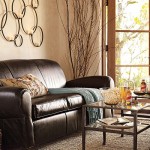 OK, years ago, I was working at the Lakewood RepcoLite and a lady came in with her husband. She pulled him–nearly dragged him–to the color chip rack and started holding up color chips to his face.
OK, years ago, I was working at the Lakewood RepcoLite and a lady came in with her husband. She pulled him–nearly dragged him–to the color chip rack and started holding up color chips to his face.
Well, this isn’t something we usually see and so I watched for a second, trying to figure out what was going on. One after another, she’d hold up a chip and then look at it, squint, turn her head from side to side and then toss the chip aside in disgust. Over and over.
I watched for a few seconds, still completely confused about what was happening, and then I walked over and asked if I could help.
Well, the little old man kind of put his head down like he was embarrassed, and his wife launched into a long explanation. And slowly, as I listened, things started to make sense. On a very limited scale–but still, at least I understood what was happening.
See, apparently, this poor little old man had just had his study at home remodelled and repainted. And unfortunately, the new paint blended in perfectly with . . . him. Yes. I’m not making any of this up. The paint blended in so well with the little old man that his wife told me she could never tell if he was sitting at his desk or not. He simply blended away into the wall color.
Well, I listened to her and then looked at the little old man. I think he was doing his best to blend in with the color behind him right then.
But the woman wasn’t done yet. She carried on with her story and concluded by telling me that she needed to find a color that accented him–a color that complimented and coordinated with her husband without blending in with him. And then, she dropped the big pressure bomb on me. She said, “That’s why I came to RepcoLite. Because I want the right color.”
Well, suddenly at that point, I was thrust into a much more complicated scenario than I’d previously realized. I had to find a color that would look great with a little old man. I had to stand in the store and hold color chips up to his little, wrinkled, humiliated face. Do you know how embarrassing that is? How awkward? For both of us?
But regardless of all of that, I persevered. I asked questions I couldn’t believe I was asking. I asked him what color clothes he usually wears. I leaned in close and tried to determine his eye color. I wanted to ask if he was always this pale or if it was because he was just nervous. But before I could ask, his wife told me. “He’s not always this pale. He’s just nervous.” Then she hit his arm and told him to stop being nervous and start coloring up to his normal tone. “Or else,” she continued “we’re going to have the same problem as before–the color won’t be right.”
Well, we worked on it for a while and finally, I ended up just custom matching a color. We sent them on their way and I waited. I didn’t have long to wait. About a day or so later, I got a phone call from the woman. She was ecstatic. She told he that her husband was sitting at his desk right now–and that she could see him sitting there from the other room. All because the color of the wall behind him was perfect. It brought out the color of his eyes without blending too perfectly with his skin. She thanked me profusely and hung up happy.
And all that to answer some common questions folks have: namely, how do I get the right color? How do I know what is the right color? What can I bring in for a color match?
The answer to all of these questions is simple. You get the right color by coming to RepcoLite. You know what the right color is by talking with our color experts and letting them help you. And, in answer to “what can I bring in for a color match?” . . . well, I’d like to ask you to surprise us. We’ve matched cups of dirt, a handfull of leaves, flower petals, dining room chairs, magazine photos, sectionals from public restrooms, toilet seats and one embarassed little old man. See if you can come up with something crazier–we love the challenge and it always makes for a great story.







